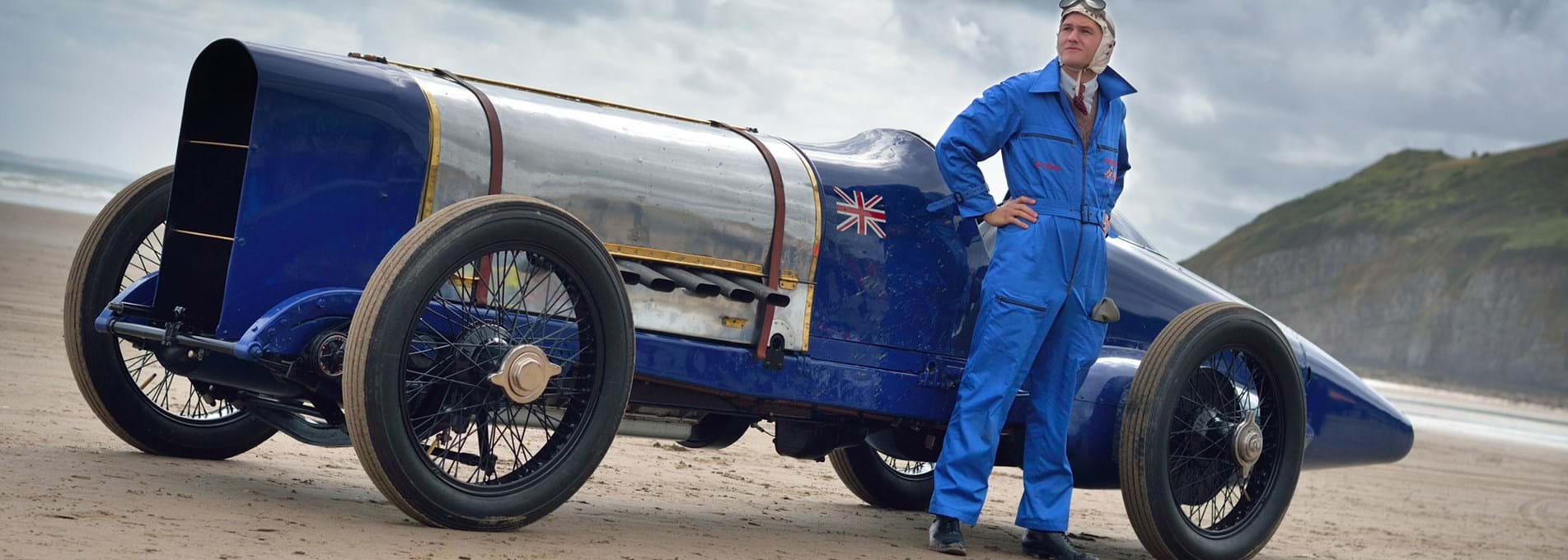Duels on the Sand
In the chronicles of human effort, this corner of Carmarthenshire can take its place alongside Mount Everest and Cape Kennedy. In the restless quest to go even higher, even further, people dared here to travel faster on land than anyone before. Those racing drivers who set out into an unknown element in the fearsome speed machines of the early 1920s could face peril, triumph, or tragedy.
Sunbeam “Bluebird”, the fastest car in the world when it appeared in 1919; now at the National Motor Museum, Beaulieu
Before the invention of tarmacadam, to find a firm, flat and level open space, with a two-mile run-up and a two-mile run-down from a measured mile – and one which is resurfaced twice a day – was asking for the impossible anywhere else in Europe, except Pendine. And even at Pendine, there were only a few days in the year when the beach obliged with the ideal surface hardness to support with safety at speed the massive 3-ton weight of landspeed record-breakers such as the Napier-Campbell (‘Babs’ weighed less than 2 tons).
The hard surface of Pendine Sands can provide a natural racetrack, when the conditions are right.
Landspeed record-attempts were a feature of the British racing world of the 1920s and beyond with hugely celebrated heroes at the wheel. Among them were Malcolm Campbell and Welshman, J G Parry Thomas, whose series of landspeed record attempts at Pendine between 1925 and 1927 were legendary.
In July 1925, at Pendine, Malcolm Campbell’s 12-cylinder Sunbeam (‘Bluebird’) raised the official 150mph mark and set a new World landspeed Record for the measured mile at 150.766mph. Eight months later, Henry Seagrave at Southport (in another Sunbeam) raised this to 152.33mph. When, in 1926 Parry Thomas in his 27-litre Liberty-engined Higham-Thomas (‘Babs’), smashed this record by 18.294 to set a new record of 170.624mph, it was a significant achievement. The short-term goal was 180mph. Campbell raised the record once again on Pendine sands in February 1927 to 174.223, in the Napier-Campbell ‘Bluebird’.
Babs on Pendine 1920's
There is little doubt that 200mph was then beyond the capabilities of Pendine. Seagrave was already on the high seas, bound for Daytona in Florida, where, with the new Sunbeam, he would crack 200mph. The 200mph mark on Pendine Sands remained unbroken for ninety years until 2018, when Zef Eisenberg achieved the fastest ever wheel powered vehicle speed at Pendine at 201.5mph on his MADMAX super charged Hayabusa.
